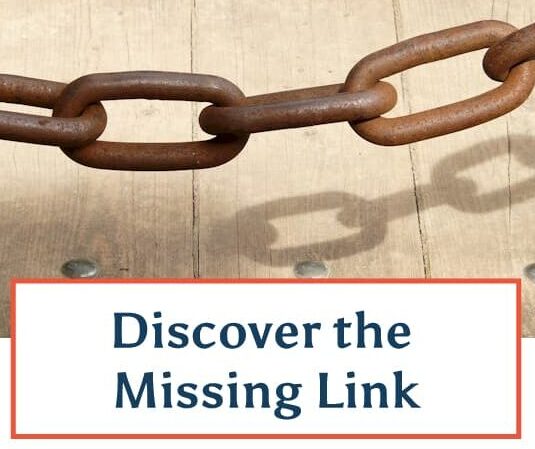These are indeed uncertain times. COVID has upended all our carefully laid plans and we’ve all had to pivot in the past year.
For the most part, we really don’t know what’s going to happen over the next year, either. News of the vaccines give us hope, but there is still uncertainty about the outcome and timing. This “not knowingness” makes it hard to plan for your business.
You may be feeling somewhat anxious for you and your family, and for your business. You may be feeling overwhelmed or distracted, and simply trying to make the best business decisions you can, with not enough assurance that those plans will hatch.
I’ve lived through 9/11 and the Great Recession, and one thing I know for sure about dealing with uncertainty: Action alleviates anxiety. By thinking through some What If scenarios, and planning a course of action, you’ll feel much better about your situation. You might even have some Ah-ha moments to put you back on track!
Thinking through What Ifs
To create an action plan for your business that’s flexible enough to flow with whatever happens in the future, you need consider What If scenarios. This will ensure you’re in a strong position in the future. You don’t want to make decisions now that you’ll regret later.
I’ll focus on COVID-related changes in this blog post, but you can use this exercise anytime you need to rethink your business and marketing model.
Learn how to design a smart marketing plan to fill your next mastermind group. Work privately with me in a small group setting to create a clear plan for marketing to your best prospective members. Design a mastermind group your audience wants to join. Grow your mastermind group business, profits and impact. Mastermind Success Accelerator virtual workshop – begins February 23.
Steps to think strategically and make better plans
First of all, don’t stress over this exercise. Let the thoughts naturally arise as your brain begins to work on the questions you pose to it. Do carve out some time to ponder this exercise, preferably in a quiet place where you can let your mind wander.
Grab your note-taking tools and I’ll walk you through several ways to think strategically and consider those What If scenarios. After that, I’ll give you some concrete ideas on how to make wise plans and take smart actions over the next few months.
Step 1 – What are your goals for this exercise? What business outcomes are most important to you right now? Are you doing this exercise to plan for short-term results (3- to 6-month timeframe), or planning for the big picture results (1 or 2 years out)?
- If you need to make money righ now, then your choices must be around how to accomplish that short-term goal.
- If you need to stabilize your cash flow, retain your staff, get your invoices paid, then your choices will revolve around that.
- If your cash flow is steady and you can weather this storm in the short-term, then focus on how you want to spend your time and money to maximize the use of your resources.
Step 2 – Download the worksheets
- Download my What If Strategic Thinking worksheet. I’ve given you two: a blank one for your own use (editable MS Word Version), and an example of one (PDF) so you can see how the planning exercise is done. (I’ll give you an example of this shortly in this blog post so you can follow along.)
Step 3 – Let’s look at What If scenarios. For each possible What If scenarios, create a row:
- In the first column, indicate the possible What If scenario.
- In the second column, indicate what that looks like in reality.
- In the third column, write down how that would impact your business. This can be both positive and negative impacts.
- In the fourth column, write down what you can do to mitigate any problems and/or take advantage of any opportunities.
There are two types of scenarios to ponder
First, we’ll look at “Timeframe scenarios,” then we’ll look at “Economic scenarios.”
- Timeframe scenarios are focused on how long the uncertainty will last.
- Economic scenarios focus on the financial impact of the uncertainty and how to plan for it.
The What If impact of Timeframe scenarios
In this example, the first set of What Ifs is around how long this pandemic will last, and how that will affect your clients and your business. You can use this timeframe scenario for any business strategy question that concerns thinking about the future and how it will play out. I’ll use COVID as the example, but that’s only one topic for timeframe scenarios in your business.
The first place to look is at the timing of events, and ask yourself What If questions about it, like:
- What if this pandemic lasts 3 months, 6 months, 18 months?
- What if it acts like our seasonal flu and comes in waves throughout the year?
Look at this example Strategic Thinking worksheet PDF to see how I filled out each column.
First Column
For example, in the first column, you’ll write:
What if the pandemic comes back in waves, and many businesses are occasionally in a lockdown situation where everyone is under “stay at home” orders?
Second Column
In the second column, you’d write down what you think will be happening in the world, in your town, in your business, and with your clients, if this What If Scenario is true.
So, what if this pandemic still comes in waves? You’ll write:
Many people would still be temporarily or permanently unemployed. Some of them might be getting stimulus money or unemployment checks. Many people who can, will be working from home, while others will be required to go to their workplace. Corporations will have to adjust their goals and budgets, but will still have needs that your business could fill.
What will your clients need and want if this scenario is true? You could write:
If most of your clients are still under “stay at home” orders, is there an opportunity to reach out to them in an online way where in the past you always did things face-to-face?
Third Column
In the third column, indicate how this impacts your business and marketing model.
You might write:
- Will they have enough money to purchase my products and services?
- Will they have excess money that they previously spent on in-person purchases that they will now use to purchase from me?
- Is there a service I previously offered in-person, that can now be offered online?
Fourth Column
In the fourth column, write down actions you can take to mitigate any risks or challenges you see coming up. Also include ways you can take advantage of any opportunities that will arise or take advantage of any assets you have. Those assets can be your knowledge, your skills, your process, your mindset, your existing or new products or services, your cash reserves, etc.
For instance, I wrote this blog post about strategic thinking because I had to do this exercise myself when the pandemic started last year. I work with small business owners, and I did the What If analysis to help me map out 2020. I’m doing it again to map out 2021. In the first column, I wrote, “What if this stay-at-home order continues on and off? My audience will be looking for ways to strategically think through redesigning their business and marketing model quickly, figuring out how to pivot. So, this is an opportunity for me and my business to get out into the world and teach them how to do that.” (And then I created a video webinar in April 2020 to help my clients through the process.)
In the fourth column, you might write:
- Talk to my clients to discover what their current and new needs are.
- Look through my product and service offerings to see if they need to be changed.
- Consider what it would take to do more national marketing. Determine if the revenue it would generate would offset the expense of changing marketing tactics, and when would that break-even occur.
The What If impacts around Economic scenarios
The second set of What Ifs are around the economic impact of events and decisions, and how that will affect your clients and your business.
In the first week of the pandemic, 3.3 million Americans claimed new unemployment filings. That was a massive spike in new unemployment claims. The previous week, there were only 282,000 new unemployment claims. A year later, we were still at 847,000 new claims each week.
Many non-essential physical businesses are closed or on reduced capacity, from restaurants and retail, to manufacturing, schools, and many more industries.
How long would this unemployment and financial situation last and how deep would it be? Of course, we didn’t know. Many people who initially were out of work have now gone back to work.
Let’s do some What If scenarios around that, as our example for an Economic scenario. Then you can see how these economic questions affect your business.
What if the pandemic eases up by the end of the year and all businesses begin to open — how long will it take businesses to recover the momentum we had before the pandemic began in our country?
One scenario is that it might take only 3 months to bounce back. Another scenario is that it takes 6 months or 12 months (or longer) to bounce back.
- If one of these scenarios is true (a quick bounce-back versus a slower one), what would that mean for your clients and your business?
- And how will you manage your business during that time? Will your offers or pricing need to change? Do you need to cut costs or increase cash flow?
- Are there any opportunities to help your clients if the economic downturn lasts a long time?
There are opportunities in all of this uncertainty
Right about now, you might be throwing up your hands in despair. This is a lot of thinking and pondering! Don’t walk away from this strategic thinking work.
There are opportunities here for you if only you’ll look for them.
For instance, at the beginning of the pandemic, Facebook ad rates were extremely low because many bricks-and-mortar businesses we’re advertising on Facebook. For a small amount of money, you could get out in front of your audience with an offer, some free education, or just to get more widely known.
I wish you much success with thinking big about your business and the direction you’ll take in the coming year.

 It’s Okay to Think Small
It’s Okay to Think Small
